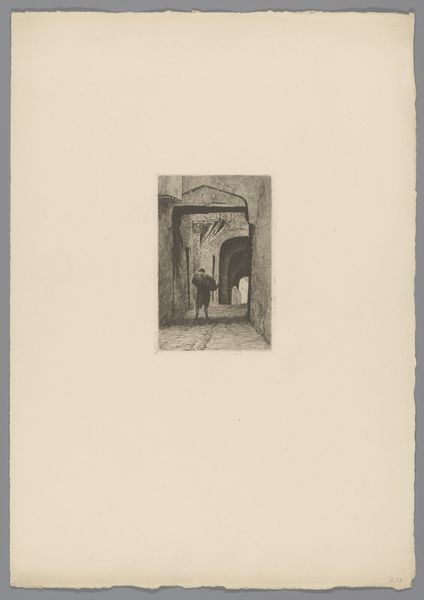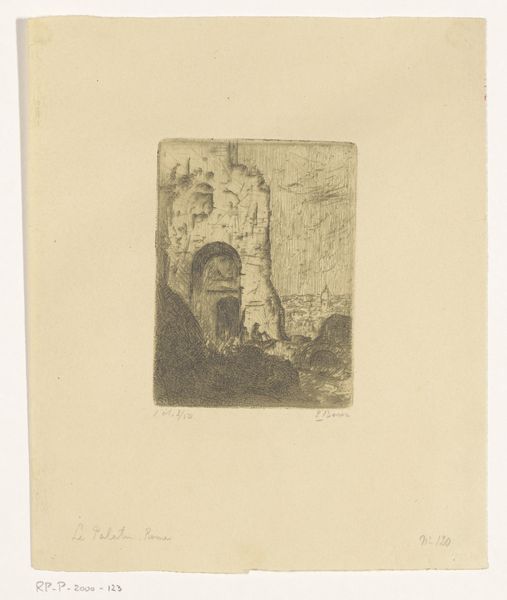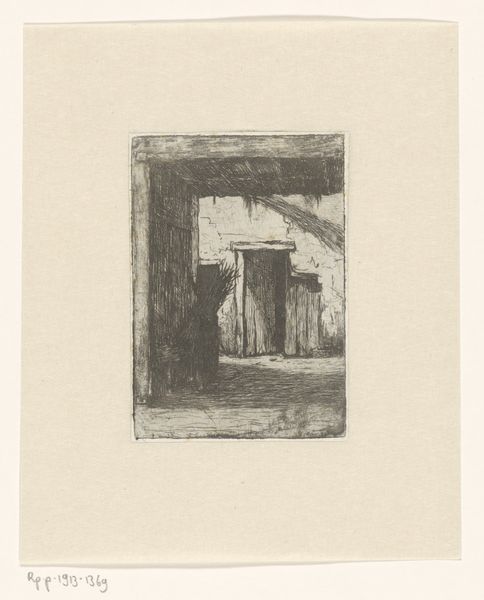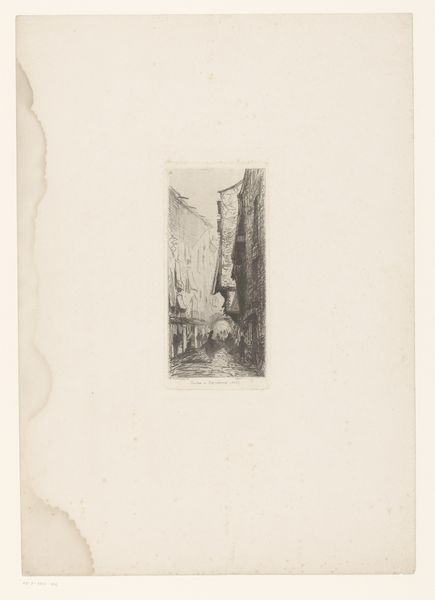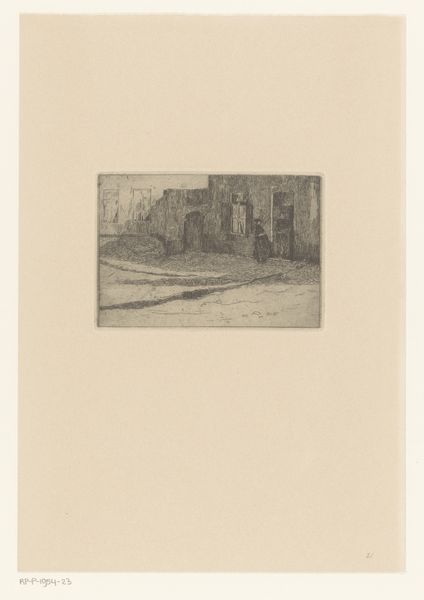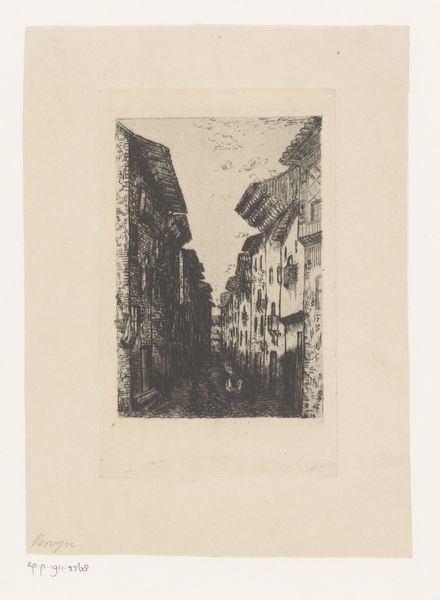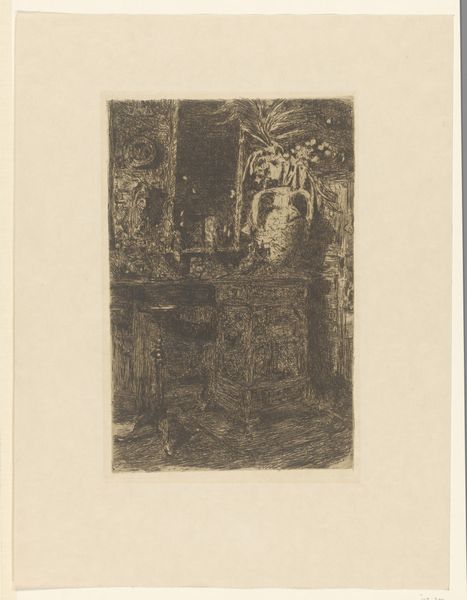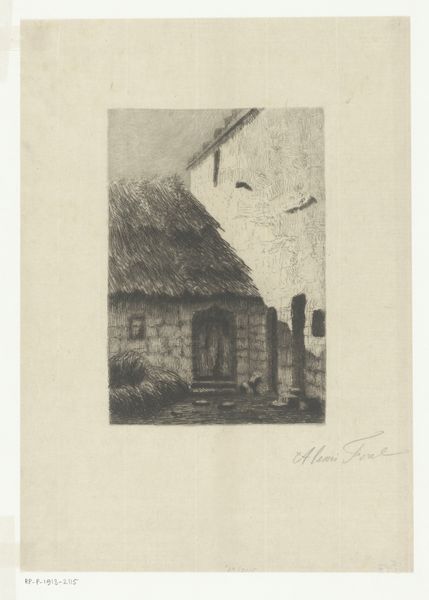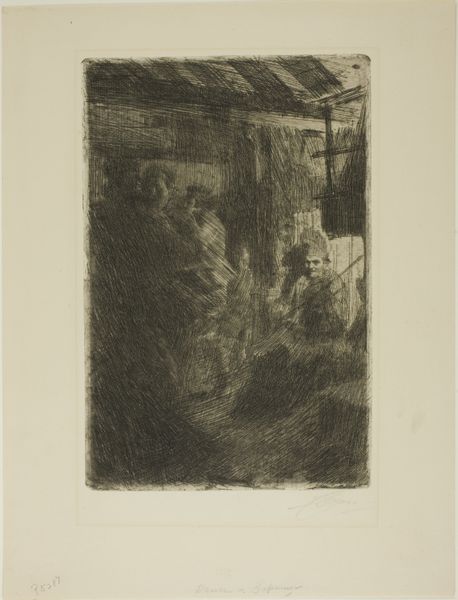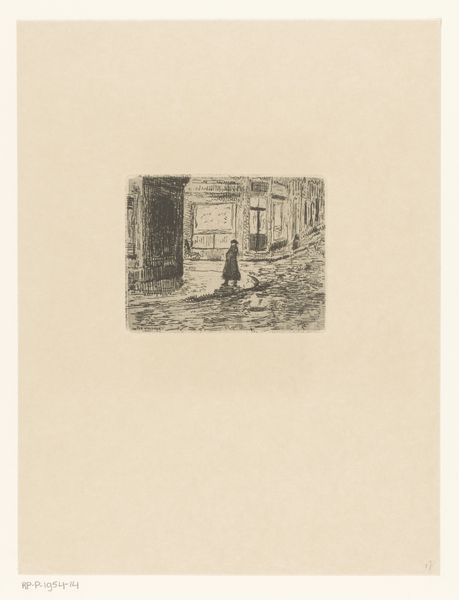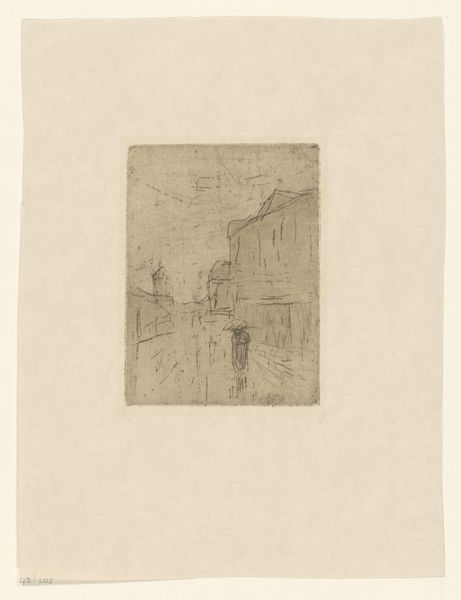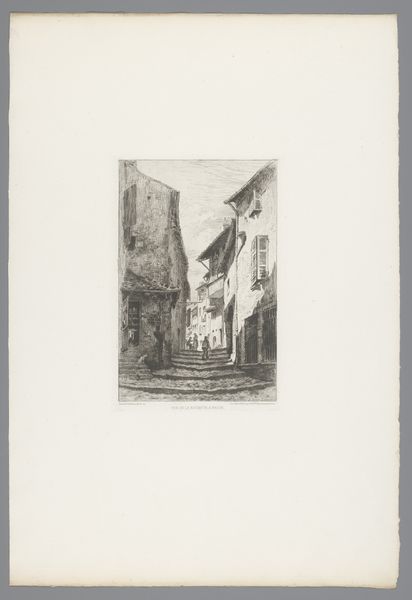
drawing, print, etching
#
drawing
#
dutch-golden-age
# print
#
etching
#
pencil sketch
#
landscape
Dimensions: height 139 mm, width 99 mm
Copyright: Rijks Museum: Open Domain
Editor: So, this is "Huizen aan het water," or "Houses on the Water," an etching by Richard Nicolaüs Roland Holst, made sometime between 1878 and 1938. It's a simple scene, but there's something dreamlike about the reflection in the water. What do you see in this piece? Curator: The immediate resonance for me lies in how Holst captures a liminal space, a boundary. Water, as an archetype, represents the unconscious, and the reflection... is it the real, or merely a shadow? Houses themselves are powerful symbols of self, family, belonging. Holst’s image then becomes a kind of mirroring, questioning what’s solid and what's ephemeral in our identities. Editor: That's interesting. I hadn’t thought about the water as symbolic. Do you think the ambiguity of the time period it was made in, that sixty year window, contributes to that sense of liminality? Curator: Absolutely. Think about the immense social and political changes happening during that time. World War I, the rise of psychoanalysis… the foundations of "home" and identity were being shaken. Look at the very technique, etching, with its delicate lines. It’s not a bold, declarative painting, but something more hesitant, suggestive. The lines blur, deliberately questioning solidity. Does this resonate with your initial feeling of it being “dreamlike”? Editor: Definitely. So, the hazy quality isn't just a stylistic choice, but adds to this whole idea of questioning reality and identity. Curator: Precisely. It’s an invitation to delve deeper into our own perceptions, our own foundations. Art isn’t just a representation of the world but also a reflection of ourselves. Editor: I will definitely look at landscapes in a different way now, considering those layers of meaning. Thank you!
Comments
No comments
Be the first to comment and join the conversation on the ultimate creative platform.

